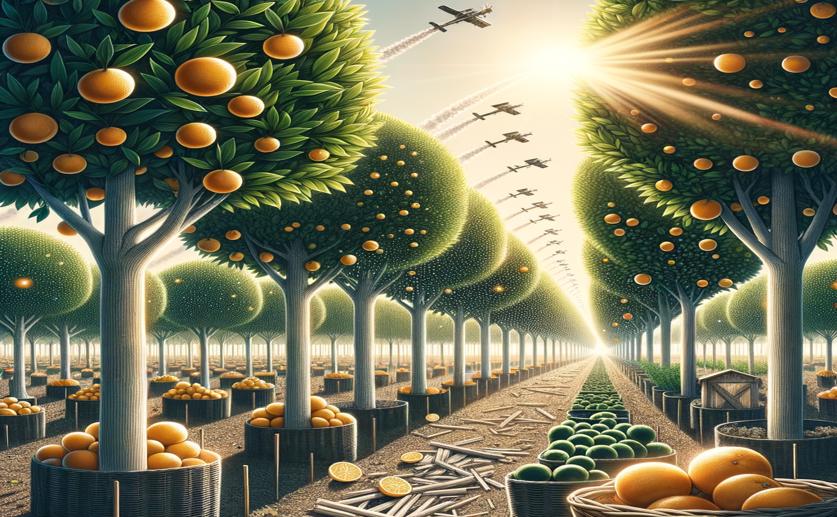
How Pruning Affects Carbon Use and Growth in Citrus Trees
Jim Crocker
1st May, 2024

Image Source: Natural Science News, 2024
Key Findings
- In a University of Florida study, defoliated sweet orange trees increased their photosynthesis rates per leaf
- Despite higher photosynthesis in remaining leaves, overall plant growth and carbon fixation were reduced
- Less carbon was allocated to fine roots, suggesting a survival strategy focusing on aboveground regrowth
AgricultureEcologyPlant Science
References
Main Study
1) Response of carbon fixation, allocation, and growth to source-sink manipulation by defoliation in vegetative citrus trees.
Published 30th April, 2024
https://doi.org/10.1111/ppl.14304
Related Studies
2) Leaf Age and Position Effects on Quantum Yield and Photosynthetic Capacity in Hemp Crowns.
3) Plantecophys--An R Package for Analysing and Modelling Leaf Gas Exchange Data.
4) Is triose phosphate utilization involved in the feedback inhibition of photosynthesis in rice under conditions of sink limitation?



 26th January, 2024 | Jenn Hoskins
26th January, 2024 | Jenn Hoskins